Let's say we have this following hierarcichal data on the habitats that make up my fantasy island (which is of course always warm and sunny!)
set.seed(1)
hab_dat <- data.frame(
habitat_type = rep(c("sea", "coast", "land"), times = 1, each = 3),
habitat_name = c("rocky", "sandy", "seaweed",
"beach", "pebbles", "rockpools",
"fields", "hills", "forest"),
area_km2 = sample(10:40, size =9))
hab_dat
I want to plot the total area of each habitat type and so write following code
hab_dat %>%
group_by(habitat_type) %>%
summarise(area_km2 = sum(area_km2)) %>%
ggplot(aes(x = habitat_type, y = area_km2, fill = habitat_type)) +
geom_bar(stat = "identity") +
scale_fill_manual(values = c("gold", "forestgreen", "blue"))
Looks good, but the legend is not very informative. I would like for the habitats contained within each habitat type to be included in the legend under the appropriate habitat type, just as qualitative information. Here is an example I made in paint.

I can get a bit closer using the following code without affecting the appearance of the plot, however, I am missing the habitat_type titles and also have multiple tiles for the same colour.
hab_dat <- hab_dat %>% mutate(col = rep(c("blue", "gold", "forestgreen"), times = 1, each = 3))
pal <- setNames(as.character(hab_dat$col), as.character(hab_dat$habitat_name))
ggplot(hab_dat, aes(x = habitat_type, y = area_km2, fill = habitat_name)) +
geom_bar(position = "stack", stat = "identity") +
scale_fill_manual(values = pal)
I have been looking at solutions along the lines of this one but am trying for a more automated solution as my actual data is a bit larger than this, and also one that presents the colour tile once per group as per my drawing.

